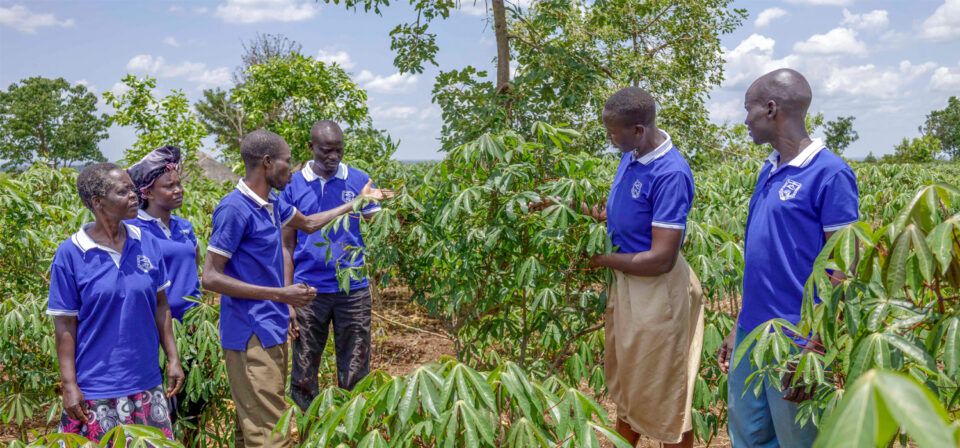 Stories
Stories
August 13, 2025 • 2 min read
In Abim District, Karamoja, a youth farming group is transforming livelihoods through modern agricultural practices and collective savings. Formed in 2023, the Yara Yara Co-operative Group has shifted from traditional farming methods to improved techniques with support from GOAL Uganda’s Markets for Youth Programme. Members are now earning sustainable incomes, starting new businesses, and increasing household food security. The group has expanded from 15 to 38 members, saving UGX 35 million (€8,430) and planning future investments in irrigation and mechanization.

The Karamoja subregion of Uganda is traditionally known for pastoralism but faces recurring droughts, flash floods, and chronic food insecurity. Communities often rely on cattle keeping, subsistence farming, and humanitarian food aid. GOAL Uganda’s Markets for Youth Programme, in partnership with the Mastercard Foundation, equips young people with practical agricultural skills, links them to markets, facilitates access to finance, and promotes youth leadership. Yara Yara Co-operative Group is one of the many youth groups benefiting from this approach, turning farming into a reliable source of income and stability.
Building Skills and Changing Practices
When the Agro Tourism Association (ATA), a skilling partner under the Markets for Youth Programme, began working with Yara Yara Co-operative Group in 2024, members were facing poor yields due to traditional farming methods.
“We thought our land was not fertile because we used to get little to no yields,” recalled Chairperson Julius Odyambo. “But we later learned that the problem was poor farming practices like seed broadcasting and late planting.”
ATA established a demonstration garden for maize and sorghum and trained members in line planting, crop spacing, manure making, use of agrochemicals, mulching, terracing, agroforestry, and post-harvest handling. The group also received business management and financial literacy training.
From Harvest to Household Transformation
In the July to December 2024 season, the group planted soya bean and green gram on one acre, earning a profit of UGX 1,800,000 (€435). “We had never made such money in agriculture,” said Odyambo. The profit was reinvested into maize farming and savings.
Several members have also achieved remarkable personal milestones. Jemimah Akurut, for example, earned UGX 2,300,000 (€555) from sorghum, which she used to buy a sewing machine and launch a tailoring business that now brings in an average of UGX 30,000 (€7.20 ) a day. “We used to have one meal a day, but now we have two,” she said, adding that she can now pay for her children’s education. Similarly, Regina Amony used UGX 730,000 (€175.20) from sorghum farming to open a small restaurant in her community.
For Emma Obirake, farming has become a cornerstone of stability. Cultivating groundnuts, green gram, and maize on 10 acres, he recently bought a cow and now earns additional income from milk sales. “Today my home is peaceful because we can afford food and basic needs. Previously, my wife and I used to fight a lot because of a lack of money,” he reflected.
Growth, Challenges, and Future Plans
The group’s success has increased its membership to 38 (26 women and 12 men) with total savings of UGX 35 million (€8,421.68). Members attribute their growth to regular meetings, inclusive leadership, especially women’s participation, and a culture of trust.
Challenges remain, particularly in accessing bank loans due to lack of collateral, though the Markets for Youth Programme is facilitating links with Centenary Bank. Looking ahead, the group plans to register as a SACCO, purchase an irrigation kit to manage drought, and acquire a tractor to support members’ farming.
Learn more about the Markets for Youth programme.

